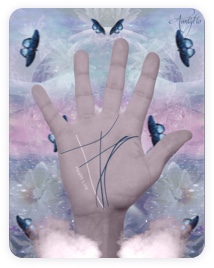Yellow Tulip

Yellow Tulip Meanings and History
Generally the color yellow in flowers signifies friendship but with yellow tulips, it is often associated with having a great smile.
Did you ever wonder what the yellow tulip means? Did someone buy you some yellow tulips? Here I run over what the yellow tulip means from Victorian times. I believe that the yellow tulip provides much happiness and is a positive omen. Think of the yellow tulip bringing sunshine in your smile or it could denote cheerfulness in general. In many old Victorian books, the yellow tulip was used to describe a person who has a bright, radiant and enigmatic smile. But when it comes to the negative connotation of the yellow tulips, it symbolizes that a person is rejected in love.
Spiritually the color yellow is connected to happiness. The "yellow" color can automatically make us feel content and happy. Yellow tulips are associated with happiness, sun and in some respects is mystic. The flower itself can help depression, especially in winter months. Yellow also his representation of clarity and sunlight the flower can be stimulating and provide self-esteem if in the home.
According to legends, it is believed that happiness can be found in the buds of a yellow tulip. Since almost everybody wants to achieve happiness, many wanted to get that happiness but the yellow tulip bud won’t open. Several people and several methods were done to make the yellow buds open but to no avail. Until one day, a little boy with a radiant and bright smile approached the yellow tulip bud that magically opened and brought happiness to the people. The little boy’s smile depicted sunshine in his smile so the yellow tulip responded to him.
- Name: Yellow Tulip
- Color: Yellow
- Shape: Like all tulips, the yellow tulip has a cup like figure when put upright in a vase. When the yellow tulip flower is laid flat, the star-shaped figure will be evident.
- Fact: There was a time that yellow tulips or tulips, in general, became more valuable than a human life. This happened in the 1500’s when the so-called Tulipomania happened in Turkey. It is said that when you buy bulbs or sell the tulip bulbs outside of their capital, you will be punished through exile.
- Poisonous: It’s mildly poisonous and is rarely lethal.
- Number of Petals: 6
- Victorian Interpretation: There’s sunshine in your smile
- Blossom Time: November to May
- Superstitions:It is believed that planting yellow tulips in your garden will bring warmth and luck for the family.
What does the Yellow Tulip mean spiritually?
Used to be, the yellow tulip means hopeless love but over the years the meaning had evolved with thoughts of cheerfulness. To welcome Easter, the yellow tulips are often incorporated to flower arrangements as it also means that you are welcoming springtime. Since the yellow tulip is associated with sunshine, it’s often used as a thanksgiving for the return of warmth as well as abundance after a long winter season. It’s also the flower being sent for those who gave birth to a lovely baby boy. When given to a sick person, it only means cheer up and get well soon.
- The Shape: The yellow tulip is no different from other tulips when it comes to shape. It also has a striking almost perfect cup shape when it is upright. However when the flower is laid flat and pressed, you will see that it is also star-shaped.
- Petals: If you breakdown a yellow tulip flower, you will find three sepals as well as three petals. You will also see six petaloidtepals and is characterized by darker markings. These petaloids are found towards the base of the yellow tulip.
- Numerology: Like the number of tepals in a yellow tulip, the numerological correspondence of tulips is also 6. People under this numerology are usually lovable and charming.
- Color: Yellow often signifies friendship but when it comes to the tulip, the yellow is associated with being cheerful.
Herbalism and Medicine:
Yellow tulips in a hospital room bring warmth and make the patient smile and be cheerful. However, that’s as far as it goes in terms of medicinal properties because the flower itself has no medicinal value. But who needs medicinal values when you can put sunshine in a patient’s smile.
What is the history of the yellow tulip?
The yellow tulip often reminds me of the sun. Here I am going to take you though the folklore about yellow tulips and why they have remained popular for many centuries. Wild tulips are brilliantly colored and spectacular. I do believe it is true to say, that they are the “showiest” of all the spring blooming perennial plants. To say the least, they are also the easiest ornamentals to grow. Apart from being used in today’s world, the tulips have a history and lore to them. Everyone loves the yellow tulip. Well I know I do.
Where did yellow tulips come from?
Yellow tulips originated from Turkey and find their way to the Netherlands. Yellow tulips and their flaiming beauty were first discovered in Central Asia. Originally, the yellow tulip was a wild growing flower. In the 1000AD, the Turkish discovered the tulip and began cultivating the flower. This was during the Ottoman Empire in the 16th Century, Turkey began the tulip mania. It so happened when there was a demand from the Sultan for certain blooms to be cultivated for their own pleasure.
Did you know that the word tulip originated from the Latin word Tulipa, derived from Tulipan, that means “Turban” in Turkey? In Turkey, the tulip is a wildflower and is known as Laleh. The tulip flower’s shape made it bear the resemblance of a turban. The Ottoman Empire admired the tulip and consequently, it was fashionable to wear them on the turban. It was through Great Britain around 1578, that the tulip was introduced in the other parts of the world.
So to conclude, the word “tulip” it comes from the word “Turban” a Turkish term. As early as the 18th century, tulips were popular in Turkey, that is the same century the Tulip Era and the Age where “tulip maina” first started. Tulip festivals were invented and it was a crime to sell or buy tulips outside the capital. It was an offense which resulted in exile. It is hard to think that people would be banished over selling tulips! The Netherlands later grew tulips making this country famous for tulips, windmills, and clogs. , the history of tulips per say goes back to the 16th century. There was many different coloured tulips in Persian gardens in the 13th century.
How were Tulips introduced in Europe?
So when did the yellow tulip enter Europe? Tulips were introduced to the Netherlands and Western European at the end of the 16th century by a biologist known as Carolus Clusius. As a director of the Hortus Botanicus in Leiden in the late 1590s, Clusius became the founder of this oldest botanical garden in Europe in the year 1587. The University of Leiden supported Carolus to research tulips in connection with finding how tulips can help medically. While he carried out research, a friend of Carolus Clusius lived in Turkey, his name was Ogier Ghislain de Busbecq, the ambassador of Istanbul, formerly known as Constantinople. He gave Ogier so tulips to grow in the palace garden and thus this resulted in the popularity of tulips.
Apart from its immediate use by the Researcher Clusius for medicinal, in the 17th century, people started using the tulip as a garden decoration. Its popularity became crazy and started being a product for business especially in Holland. The Tulip was selling for a much higher price as the demand for flowers increased. In our day (modern world) this could be around £1000 a bulb!
What is a Tulip Vase?
The Tulip vase was a special one, made for displaying tulip in the 17th century. This varse was created in various shapes with various openings used to place an individual tulip stem. They were mostly decorated in Delft Blue, made in Delft NL, and painted in the original porcelain patterns of Chinese. We must remember that the tulip was expensive, thus, the tulip vase, which was specifically designed to hold tulip, was damn expensive too.
Why the popularity for tulips in the 16th century?
The flower started being hybridized by botanists and with that, they discovered a way of making more tempting and decorative specimens. From what I read, mutations and hybrids were considered as rarities and a sign of high status. In late 1636 and early 1637, a Tulipomia emerged in the Netherlands. In 1637, the price of tulip came down after people found it odd to purchase the flowers at such a high price, some equated to buying a house in the current Amsterdam. In the 17th and 18th century, there was still interest in the tulip with the Dutch people remaining the stockists and connoisseurs.
The Twentyth Century Hybrids of Tulip:
It was in the 20th century that it was discovered that, the dramatic flames and the frilly petals was able to produce some of the varieties, which was discovered to be a mosaic virus infection. The healthy tulips are smooth, solid, and monotone. The tulip consequently was diseased due to a louse living on potatoes and peaches which spread the “tulip” virus.
What are the different tulip divisions?
Tulips are found in different groups and designs as follows:
- Single Early: They have cup-shaped flowers, single cultivars, which measure approximately 7.5cm wide and have been in existence for quite a long time. An example is Apricot Beauty.
- Species: Known by another name, Botanical Tulips, it is a perennial species. They are more delicate and smaller than the modern hybrids, but they are normally long-lived and very hardy. An example is Whittall.
- Double early: They are short-stemmed, double-flowered cultivars and they flower early. Their properties are long lasting and they are suitable for cut flowers. They have double peony-like flowers that measure about 7.5 cm to 10 cm wide. An example of this flower includes Exotic Emperor.
- Greigii hybrids: It is normally either marbled or striped foliage and it flowers later than the Kaufmanniana group. Its leaves normally bend down towards the ground or it spreads out. It is a permanent variety which comes up every year. They have colored flowers that are bright. An example is Red Riding Hood.
- Triumph: They have a medium stem in height, are single cultivars, and normally flower during mid-season. It originated from a hybridization between single late group cultivars also known as midseason tulips and single early group cultivars. It has lasting properties and produces conical flowers that are more rounded up to 7.5 cm wide. An example of this flower includes Jan Reus.
- Rembrandt: They have broken flowers, marked or striped with red, brown, purple, black, or bronze with a background that is either yellow or white. It is long stemmed and the coloring is caused by a certain virus infection.
- Viridiflora: This tulip has green streaks. It is easy to distinguish them and at times, they have markings on their petals which become flowers later on. There only 50 types of this tulip with an example being Flaming spring green and China town.
- Fosteriana hybrids: It is available in many species, cultivars, hybrids, and varieties. It is an early flowering variety that has broad leaves which can either be striped or mottled. They have flowers which are slender, especially when closed which open up at approximately 18cm to 20 cm in full. An example is Purissima.
- Darwin: This tulip flowers in mid-season around April/May. It is a result of the hybridization of Tulipa Fosteriana with cultivars of the Darwin group, which resulted in the hybridization between botanical tulips and other cultivars. They have characteristics that are related to that of the Fosteriana. They have goblet like flowers that are huge, measuring 15cm wide. An example is Design Impression.
- Kaufmanniana hybrid: It is one of the most permanent tulip types which is available. It is similar to a water lily that flattens out when it is opening and can either have striped or mottled leaves or bi-colored. An example is the Hearts Delight.
- Single late: They are late flowering, long-stemmed and single flowered cultivars. They include tulips from cottage-type groups and former Darwin. They are versatile with large flowers on their stems which are very strong. They have squarish, oval flowers with pointed petals. An example is the Red Georgette, Bruine Wimpel.
- Peony flowered/Double late: It has fully double flowers that are large and measure up to 12 cm wide. An example of this particular tulip is Double Maureen.
- Lily-flowered: It flowers either mid-season or late with its stem varying in length. They have slim, long flowers with pointed petals which flare out at their tips. They resemble a lily and that is where they derived their name. They normally measure 15cm wide. An example is the Sapporo Ballerina.
- Parrot: It has an unusual curled, fringed, and twisted petals. Their stems are of varied length. It is a late flowering cultivar with large flowers which can be bi-colored. An example of this particular type is Rococo.
- Fringed: Fringed have edged petals with crystalline fringes and it is a single flowered cultivar. It normally flowers in late or mid-season. Its stem is of a varied length. An example is Purple Tower.
What does it mean to dream about yellow tulips?
When you have a dream where you see yellow tulips, it denotes that, you are going to have fresh beginnings. Tulips are normally symbolic of charity, faith, perfection, hope, fertility, and idealistic love. When you see or dream about a yellow tulip, it implies that you are in hopeless love. Alternatively, it could indicate that you are expressing your cheerful sunshine or thought.
By Florance Saul
Aug 21, 2012







